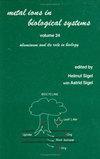镓等主要金属族化合物作为抗肿瘤药物。
摘要
镓是继铂类药物在常规临床应用后,第二种显示出抗人类恶性肿瘤活性的金属。它作为一种简单的阳离子具有抑制肿瘤生长的独特性质,主要是因为它与三铁非常相似。尽管镓不能在三价和二价氧化态之间转换,排除了它在各方面表现为铁类似物的可能性,但它通过与转铁蛋白和转铁蛋白受体介导的内吞作用的竞争性相互作用,强烈干扰细胞从血液中获取铁。此外,镓似乎也会影响细胞内已经通过这一途径摄取的铁的可用性,这可能是由于其对液泡型H(+)- atp酶的抑制活性。除了铁剥夺的后果外,镓还通过与铁依赖酶核糖核苷酸还原酶的直接相互作用发挥细胞毒性作用,导致dNTP池减少和DNA合成抑制。转铁蛋白受体的丰度和核糖核苷酸还原酶的上调使肿瘤易受镓诱导的细胞毒性的影响。然而,一些实验发现提出了一个问题,即这些效应是由镓的铁模拟特性引起的,还是仅仅是其抗肿瘤活性的原因,或者是否涉及其他机制,例如其抑制微管蛋白聚合的能力导致的抗有丝分裂作用。硝酸镓和氯化镓需要长期暴露于血液中低稳态镓水平,以充分利用镓对肿瘤组织的亲和力,避免严重的毒性作用,这些局限性可以通过口服镓配合物如三(3-羟基-2-甲基- 4h -吡喃-4-onato)镓(III)(麦草酸镓)或三(8-喹啉醇)镓(III) (KP46)来克服。目前正在临床试验中进行评估,并有望在临床环境中启动镓的复兴。这两种正在研究的药物,尽管其复合稳定性不同,但都是为了提供一种允许充分肠道吸收的形式,而不改变其药效学效果而开发的。基于其他原理的镓络合物是稀缺的,而且,关于这种金属众所周知的抗肿瘤潜力,显然还没有得到充分的探索。随着最近三氧化二砷被批准用于急性早幼粒细胞白血病的二线治疗,在现代癌症化疗时代之前,砷化合物一直是抗白血病治疗的主要手段,它的临床复兴已经开始。目前,正在大力探索其他(不太罕见的)恶性肿瘤的活性谱,并对其作用方式有更深入的了解。虽然这一进展目前主要集中在三氧化二砷上,但它也应该适合于激发对其他砷化合物治疗潜力的研究。Gallium has been the second metal to show activity against malignant tumors in humans soon after the establishment of platinum drugs in routine clinical practice. It has the unique property of inhibiting tumor growth as a simple cation, mainly because of its close resemblance to ferric iron. Even though its inability to shift between the trivalent and a divalent oxidation state precludes that gallium behaves as an iron analogue in every respect, it strongly interferes with cellular acquisition of iron from blood by competitive interaction with transferrin and transferrin receptor-mediated endocytosis. Furthermore, gallium also seems to affect intracellular availability of iron already taken up via this pathway, probably due to its inhibitory activity on vacuolar-type H(+)-ATPases. Apart from the consequences of iron deprivation, gallium exerts cytotoxic effects by direct interaction with the iron-dependent enzyme ribonucleotide reductase, resulting in reduced dNTP pools and inhibition of DNA synthesis. Both the abundance of transferrin receptors and upregulation of ribonucleotide reductase render tumors susceptible to gallium-induced cytotoxicity. However, some experimental findings raise the question whether these effects resulting from the iron-mimicking properties of gallium are solely responsible for its antineoplastic activity or whether additional mechanisms are involved, such as antimitotic effects which result from its capability of inhibiting tubulin polymerization. The limitations experienced with gallium nitrate and gallium chloride, which call for a prolonged exposure to low steady-state gallium levels in blood in order to adequately exploit the affinity of gallium to tumor tissues and to avoid severe toxic effects, may be overcome by oral gallium complexes such as tris(3-hydroxy-2-methyl-4H-pyran-4-onato)gallium(III) (gallium maltolate) or tris(8-quinolinolato)gallium(III) (KP46), which are currently being evaluated in clinical trials and show promise to initiate a revival of gallium in the clinical setting. These two investigational drugs, albeit differing in their complex stability, have both been developed with the intention of providing gallium in a form which allows sufficient intestinal absorption, but without altering its pharmacodynamic effects. Gallium complexes based on other rationales are scarce and, with regard to the well-known antineoplastic potential of this metal, noticeably under-explored. With the recent approval of arsenic trioxide for the second-line treatment of acute promyelocytic leukemia, the clinical revival of arsenic compounds, which have been the mainstay of antileukemic therapy before the age of modern cancer chemotherapy, has already begun. Currently, strong efforts are being made to explore the activity spectrum in other (less rare) malignancies and to gain a deeper insight into the mode of action. Although this development is currently focusing on arsenic trioxide, it should be suited to stimulate investigations into the therapeutic potential of other arsenic compounds as well.

 求助内容:
求助内容: 应助结果提醒方式:
应助结果提醒方式:


